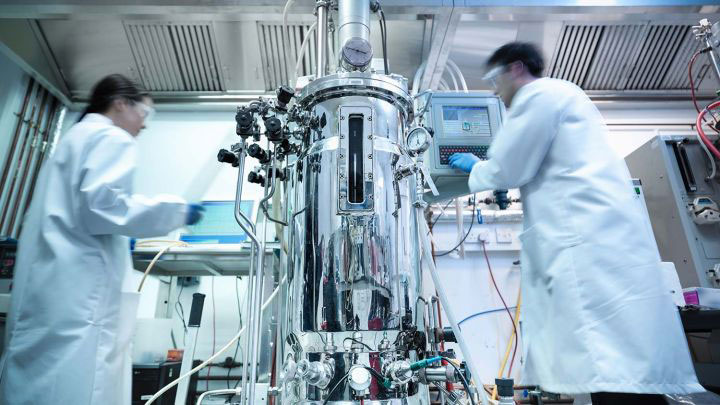Biomanufacturing sector set to ‘boost its efficiency’
Posted: 28 September 2018 | Mike Stones | No comments yet
The next five years will see game-changing improvements made in upstream, downstream and continuous bioprocessing, predicts one industry specialist…


Big improvements in upstream, downstream and continuous bioprocessing are predicted during the next five years.
Much greater efficiency in biomanufacturing and an increased exchange of ideas across small and large molecule industries are two of the main bio trends highlighted in CPhI’s 2018 Annual Industry Report.
In the report, specialist Mike Ultee of Ulteemit BioConsulting predicts big improvements in bioprocessing techniques and, particularly, cell line productivity for recombinant proteins. Over the next five years, the productivity of fusion proteins and enzymes will move towards the 2-5g/l range, said Ultee. That will continue the trend towards smaller bioreactors.
The increasing use of continuous bioprocessing will see the return of perfusion bioreactors, aided by inline new filtration technologies, he added. Those included: ultrafiltration, diafiltration and concentration equipment.
Over the period, high-efficiency perfusion techniques will also enable very high densities (~108cells/mL) in small volumes. The pipeline of CAR-T and gene therapies will come to market in increasing numbers as bioprocessing techniques have proved reliable in bringing products through clinical and commercial production, predicted Ultee.
‘We will have been through a golden period’
“In five-years’ time, we will have been through a golden period, with game-changing improvements made in upstream, downstream and continuous bioprocessing,” he said. “The market will by then also boast much greater numbers of biosimilars and new applications for cell and gene therapies. The industry is collectively maturing extremely quickly from big pharma and biosimilars to CDMOs [contract development and manufacturing organisation].”
The report also contains an analysis by Kent Payne, CEO of Socorro Pharmaceuticals LLC, of how demand was now outstripping supply for qualified bio professionals in the big bio hubs – notably Boston and San Francisco. Small molecule professionals will increasingly move across areas such as conjugation and antibody-drug conjugates (ADCs) where there is directly transferable expertise.
Biomanufacturing enters its maturation stage
As biomanufacturing enters its maturation stage, especially among the smaller, nimble biotechs, they will increasingly look borrow from practices already established in the small molecule segment rather than by any means to market, argued Payne.
“There are lessons to be learned from Pharma peers to drive enhanced productivity and quality, whilst simultaneously lowering costs,” he said. “The processes and skills that have been honed at larger companies to drive operational excellence are key to the smaller companies’ growth and profitability prospects. As small companies reach a tipping point in their life cycle, they must move beyond the ‘just get it done by any means’ mode to a ‘growth by design’ mode in order to be prepared for commercialisation and beyond.”
The supply chain and management systems are where great efficiencies have yet to be discovered. “Over the last decade or so, many of the larger biomanufacturing players have implemented more sophisticated production management systems to provide real monitoring and optimisation. Nevertheless, in comparison to small molecule counterparts, there is still much room for improvement,” said Payne.
The inaugural bioLive event takes place alongside CPhI Worldwide in Madrid between 9-11 October, 2018
Meanwhile, read the report here.
Related topics
Antibiotics, Bioprocessing, Biosimilars, Drug Manufacturing, Drug Markets, Drug Supply Chain, Industry Insight, Pipelines, protein structure
Related organisations
CPhI Worldwide, Socorro Pharmaceuticals LLC, Ulteemit BioConsulting









